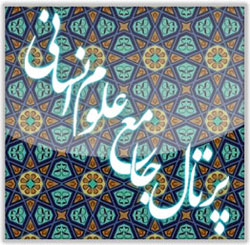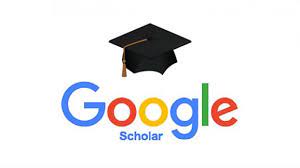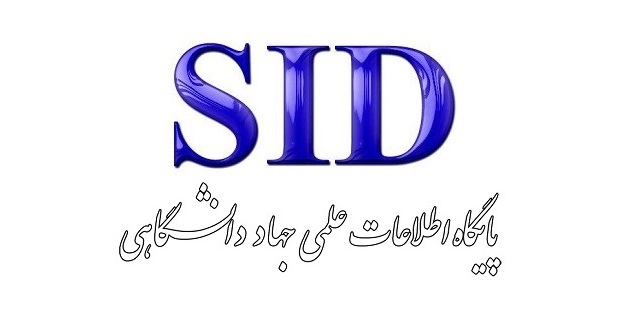Presenting a Model of Factors Affecting The Development of Medical Tourism in Iran
Keywords:
Medical Tourism, Health Tourism Development, Fuzzy Delphi, Cross-Impact Analysis, IranAbstract
This study aims to identify and systematically model the principal factors influencing the development of medical tourism in Iran, and to propose actionable strategies for its enhancement. The present study is applied. The theoretical population of this study includes experts with qualifications and experience in medical tourism. Sampling in this study was done in a judgmental manner and based on specialized knowledge with a sample size of ten people. Literature review, screening questionnaires, and interaction questionnaires were the main data collection methods in this study. Thirty factors were extracted from the research background and expert opinion, of which 21 factors had a defuzzified number greater than 0.7, which were categorized into 9 groups and selected for final evaluation and modeling. The screened stimuli were evaluated using the interaction technique with Micmac software. Four dominant factors were identified as particularly influential in advancing medical tourism in Iran: travel and treatment costs; the influence of the destination country’s culture, religion, and national brand image; the quality of doctors, hospitals, and medical services; and government policies and support. The interactions between these drivers were mapped, providing an in-depth understanding of their systemic roles within the sector. Enhancing the competitiveness of Iran’s medical tourism sector requires strategic measures focused on reducing costs, strengthening national branding and cultural appeal, elevating service quality, and reinforcing government support and policies. The findings offer a robust, data-driven framework for policymakers and sector stakeholders to guide targeted interventions and informed decision making for sustainable development.
Downloads
References
Al-Romeedy, B. S. (2025). Digital passports to wellness: How technology is shaping medical tourism (A. A. T. P. K. Singh, Trans.). In M. E. Emam (Ed.), Revolutionizing Healthcare Experience with Digital Medical Tourism (pp. 111-136). IGI Global. https://doi.org/10.4018/979-8-3693-7888-5.ch004
Alp, G. (2024). Medical tourism destination image: Scale development. International Journal of Tourism Research, 26(4), e2723. https://doi.org/10.1002/jtr.2723
An, D. (2014). Understanding medical tourists in Korea: Cross-cultural perceptions of medical tourism among patients from the USA, Russia, Japan, and China. Asia Pacific Journal of Tourism Research, 19(10), 1141-1169. https://doi.org/10.1080/10941665.2013.840659
Asa, G. A. (2024). Medical tourism among Indonesians: A scoping review. BMC Health Services Research, 24, 49. https://doi.org/10.1186/s12913-023-10528-1
Benjumea-Arias, M. (2016). Structural analysis of strategic variables through MicMac use: Case study. Mediterranean Journal of Social Sciences, 7(4), 11-19. https://doi.org/10.5901/mjss.2016.v7n4p11
Chee, H. L. (2017). International medical travel and the politics of transnational mobility in Asia. Asia Pacific Viewpoint, 58(2), 129-135. https://doi.org/10.1111/apv.12164
Connell, J. (2013). Contemporary medical tourism: Conceptualisation, culture and commodification. Tourism Management, 34, 1-13. https://doi.org/10.1016/j.tourman.2012.05.009
Ganguli, S. (2017). A qualitative analysis of Singapore's medical tourism competitiveness. Tourism Management Perspectives, 21, 74-84. https://doi.org/10.1016/j.tmp.2016.12.002
Godet, M. (1999). De la anticipación a la acción: Manual de prospectiva y estrategia. Alfaomega.
Habibi, A. (2015). Fuzzy Delphi technique for forecasting and screening items. Asian Journal of Research in Business Economics and Management, 5(2), 130-143. https://doi.org/10.5958/2249-7307.2015.00036.5
Jiménez, M. (2009). Herramientas para el análisis prospectivo estratégico: Aplicaciones MICMAC. Hersa Ediciones.
Karadayi-Usta, S. (2024). Sustainable medical tourism service network with a stakeholder perspective. Current Issues in Tourism, 28(2), 321-340. https://doi.org/10.1080/13683500.2024.2309148
Kim, S. (2019). Critical success factors of medical tourism: The case of South Korea. International journal of environmental research and public health, 16(24), 4964. https://doi.org/10.3390/ijerph16244964
Latief, A. (2024). Healthcare facilities and medical tourism across the world: A bibliometric analysis. Malaysian Journal of Medical Sciences, 31(2), 18. https://doi.org/10.21315/mjms2024.31.2.3
Leng, C. H. (2010). Medical tourism and the state in Malaysia and Singapore. Global Social Policy, 10(3), 336-357. https://doi.org/10.1177/1468018110379978
Li, X. (2024). Perception of medical practitioners on the importance of medical tourism services. International Journal of Tourism Research, 26(1), e2617. https://doi.org/10.1002/jtr.2617
Malhotra, N. (2024). Dimensions and drivers of medical tourism industry: A systematic review of qualitative evidence. International Journal of Business and Globalisation, 36(1), 60-82. https://doi.org/10.1504/IJBG.2024.135998
Mojica, F. (2005). La construcción del futuro: Concepto y modelo de prospectiva estratégica, territorial y tecnológica. Universidad Externado de Colombia.
Nunabee, S. (2025). The study of integrated marketing communication for medical tourism in Thailand. International Journal of Research and Innovation in Social Science, 9(2), 1691-1700. https://doi.org/10.47772/IJRISS.2025.9020138
Pikkel, Y. Y. (2025). Mending a world of problems: 12-year review of medical tourism inbound complications in a tertiary centre. Aesthetic Plastic Surgery. https://doi.org/10.1007/s00266-024-04523-y
Reshadi, M. S. (2025). A review of medical tourism entrepreneurship and marketing at regional and global levels and a quick glance into the applications of artificial intelligence in medical tourism. Ai & Society. https://doi.org/10.1007/s00146-024-02178-6
Saeidi Mofrad, S., & Pakan, P. (2022). The evaluation of health tourism branding indicators in Mashhad metropolis. Geographical Journal of Tourism Space, 11(41), 141-162. https://doi.org/10.52547/gjts.11.41.7
Shoukat, M. H. (2025). Medical tourism index and travel willingness via travel anxiety: PLS-NCA approach. Tourism Recreation Research, 50(2), 369-384. https://doi.org/10.1080/02508281.2023.2240180
Smith, R. (2011). Medical tourism: A review of the literature and analysis of a role for bilateral trade. Health policy, 103(2-3), 276-282. https://doi.org/10.1016/j.healthpol.2011.06.009
Wen, Y. C. (2025). Word-of-mouth referrals between patients are a critical component of medical tourism for pediatric hematopoietic cell transplantation. Medicine, 104(2), e41244. https://doi.org/10.1097/MD.0000000000041244
Downloads
Published
Submitted
Revised
Accepted
Issue
Section
License
Copyright (c) 2025 Mahdi Nasrollahi; Mohammad Hasan Maleki, Zahra Mohammadi (Author)

This work is licensed under a Creative Commons Attribution-NonCommercial 4.0 International License.







